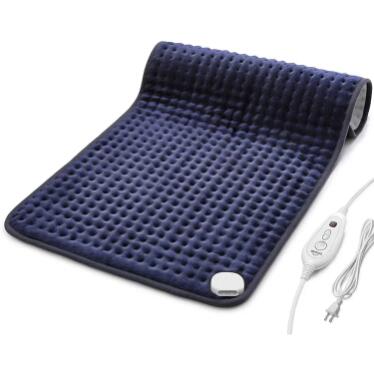How to Choose the Right Air Heating Mat for Your Space
2024-09-07
Choosing the right air heating mat for your space can be a game-changer in terms of comfort, energy efficiency, and cost savings. Whether you want to install underfloor heating in your bathroom or keep your outdoor walkway free from ice, air heating mats provide a flexible and customizable heating solution. In this blog, we’ll discuss the key factors to consider when selecting the right air heating mat for your specific needs.
1. Determine the Area to Be Heated
The first step in choosing an air heating mat is understanding the area you want to heat. Different types of mats are designed for specific uses, such as:
- Indoor Underfloor Heating: For spaces like bathrooms, kitchens, and living areas, you’ll want a mat that’s compatible with your type of flooring, whether it's tile, wood, laminate, or carpet.
- Outdoor Heating: If you need a solution to prevent ice buildup on driveways or walkways, you’ll need a more robust mat that can withstand outdoor conditions.
- Workspace Heating: For small areas, such as under your desk or workstation, consider a smaller, more localized heating mat that can be easily controlled for personal comfort.
2. Select the Appropriate Heating Power
The power of an air heating mat is measured in watts per square meter (W/m²), and selecting the right power output depends on the area you’re heating:
- Low-Power Mats (100-150 W/m²): Ideal for supplemental heating in well-insulated rooms or as a comfort feature in small spaces like bathrooms. These mats will gently warm floors but may not be sufficient for primary heating in colder climates.
- Medium-Power Mats (150-200 W/m²): Suitable for larger rooms where you need moderate warmth, such as kitchens or living rooms. These mats offer a good balance between heating power and energy consumption.
- High-Power Mats (200+ W/m²): Necessary for outdoor applications or in rooms that require more intensive heating, such as sunrooms, garages, or cold basements. These mats can also be used for snow-melting systems on driveways or patios.
3. Choose the Right Material Compatibility
When choosing an air heating mat, it's important to ensure that the mat is compatible with your existing flooring or surface materials:
- Tile and Stone Flooring: Air heating mats work exceptionally well with tile and stone due to these materials' ability to retain and distribute heat evenly. Make sure the mat is designed to withstand the higher temperatures typically needed to heat these surfaces.
- Wood or Laminate Flooring: Some mats are specifically designed for use under wood or laminate floors, where temperature control is essential to avoid warping the material.
- Carpet: If you plan to install the mat under carpet, ensure it’s compatible with this flooring type and won’t create uneven surfaces or overheating.
4. Consider Installation Type
Air heating mats come in different designs to suit various installation needs. Some key options include:
- Roll-Up Mats: These are easy to install and can be cut to fit specific room sizes or shapes. They’re ideal for straightforward underfloor heating applications.
- Self-Adhesive Mats: For quick and easy installation, self-adhesive mats come with a sticky backing, making them a convenient option for DIY projects.
- Mesh or Cable Systems: These are more flexible and can be shaped to fit irregular areas or around fixtures like toilets, bathtubs, or kitchen islands. However, they may require more effort and professional installation.
5. Smart Control Options
Advanced air heating mats come with a range of smart control features, allowing you to maximize comfort and energy efficiency:
- Thermostatic Control: Most mats come with a thermostat that lets you set and control the desired temperature.
- Smart Home Integration: Some models can be integrated with home automation systems, allowing you to control the heating mat via smartphone apps or voice-activated assistants like Alexa or Google Home.
- Zoned Heating: Look for mats that allow you to create different heating zones within a room, so you can heat specific areas without wasting energy on unnecessary spaces.
6. Energy Efficiency Considerations
Air heating mats are known for their energy efficiency, but to get the most out of your system, consider the following:
- Insulation: Proper insulation under and around the heating mat can significantly reduce energy consumption by minimizing heat loss.
- Programmable Thermostats: Choose a model that allows for programming, so you can set schedules that reduce energy usage during times when the heating isn’t needed, such as overnight or when you’re away.
Conclusion: Finding the Perfect Air Heating Mat
When selecting the right air heating mat, the key is to balance power, material compatibility, and control features to suit your specific needs. Whether you're heating a bathroom floor, outdoor walkway, or office space, air heating mats provide a customizable, energy-efficient solution that delivers consistent warmth where you need it most. By taking the time to consider your specific use case, you’ll ensure a comfortable and efficient heating system for years to come.



